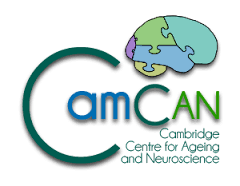Polycomb-associated and Trithorax-associated developmental conditions—phenotypic convergence and heterogeneity
Smail, A., Al-Jawahiri, R. & Baker, K. (2025)
European Journal of Human Genetics, 1-8.
What did we do?
- It is often challenging to link clinical symptoms to genetic diagnoses in neurodevelopmental conditions, because of the large number of different genetic conditions that can be diagnosed, and the wide variation between individuals with the same genetic diagnosis.
- This is the case for Polycomb (PcG) and Trithorax (TrxG) -related conditions. PcG and TrxG complexes involve many different proteins which work together to control cell function during development. They do this by regulating when and where other genes are expressed, alongside other chromatin-related genes.
- In this paper, we explored the similarities and differences in symptoms experienced by individuals with PcG and TrxG-related conditions.
What did we find?
- First, we compared the symptoms of 462 individuals with PcG/TrxG-related conditions to a large group of individuals with other single-gene conditions.
- We found that the PcG/TrxG-related conditions group were more likely to have reported abnormalities in growth, limbs, digestive system and skin.
- We also found that aspects of brain function are affected in 94% of individuals with PcG/TrxG-related conditions, with wide variation between individuals, particularly affecting speech development.
- We then looked at whether some PcG and TrxG-related conditions “cluster” into sub-groups with similar clinical characteristics. We found that there may be three such sub-groups, based on the specific gene involved.
- However, when we looked at the clinical characteristics of individual patients within the PcG and TrxG-related group, we found that there is a great deal of variation which cannot be predicted by specific genetic diagnosis.
How can this research help?
- Our results highlight the most frequent clinical concerns that individuals with PcG/TrxG-related conditions experience. This may help with diagnosis of such conditions in the future.
- Our results also highlight the complexity of these conditions, and the need to understand each individual’s health and development beyond identifying the genetic cause.
What is next?
- We are now carrying out a study of brain structure and function in individuals with chromatin-related conditions, to improve understanding of these important aspects which have a major impact on the everyday life.
- We think that future research could focus more on the adult health needs of this population, which have been relatively under-studied so far and for which there is little support available at present.
- Ultimately, by understanding different aspects of these conditions across the lifespan, we hope to contribute to improvements in quality of life for patients and their families.
Resources

 MRC Cognition and Brain Sciences Unit
MRC Cognition and Brain Sciences Unit

